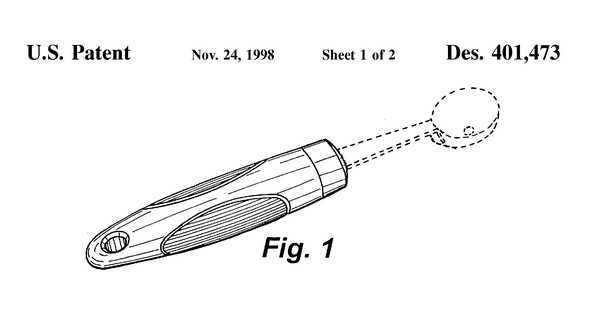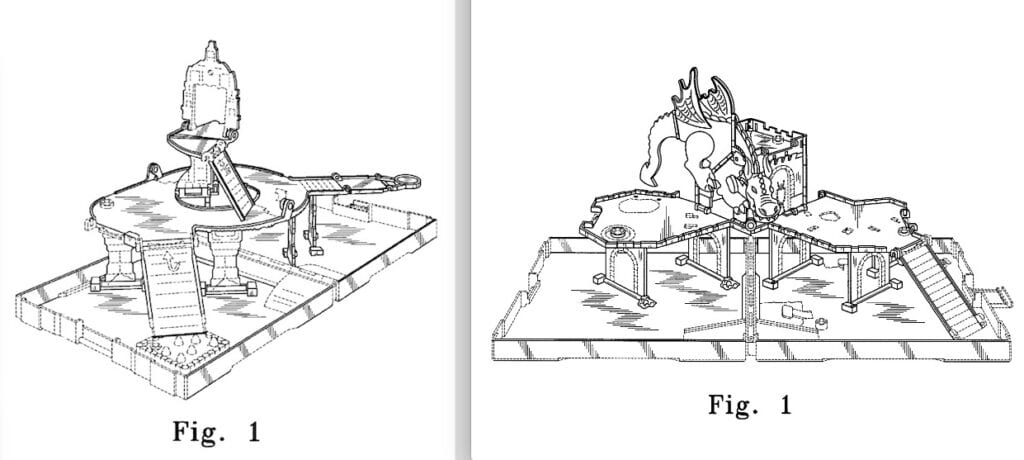Design Patent for Consumer Products
In today’s competitive marketplace a successful business product will likely draw competition, and competitors may try to copy the successful product. This is especially true in the field of consumer products. A design patent is a cost-effective way to protect successful consumer products from infringement.
A design patent protects the design of an invention. Often, innovative design is what makes a consumer product successful. For example, the company Oxo International owns the rights to a unique handle design used in food preparation products. The handle design was based on bicycle handlebar grips. In 1998, Oxo obtained a design patent on this handle design for use in food preparation products.

This handle design is considered so innovative that it’s listed on the Smithsonian National Museum of American History. And, this handle design is part of Oxo’s line of food preparation products. Shown below is the Oxo carrot peeler, using the handle design.

If Oxo had failed to obtain a design patent, it is almost certain that competitors would have made knock-offs of the Oxo handle, and Oxo would have had to compete against these knock-offs. Since Oxo had a design patent, it had the sole right to sell this handle design. This allowed Oxo to focus its money and resources on marketing its product, rather than fending off competitors. This is just one example showing why design patents can be so important in the consumer products field.
Filing a design patent application is relatively straight-forward. A design patent application must have drawings that show all sides of the design. A design patent protects the ornamental design as shown in the patent drawings. This is distinct from a utility patent, where the protected invention is what is written in the claims.
Design patents cannot claim a purely utilitarian device. In other words, the design of the device cannot be dictated solely by function, there must be an ornamental aspect to the device. Most inventions have some functional purpose, so this raises the question of what is functional and what is ornamental. There is a body of case law discussing the distinction between an ornamental design and a functional design. For example, one case looked at the fins on a foam football-shaped ball. The court noted that the tail fins added stability for the ball in flight, which was functional. However, the fins also produced an overall “rocket-like†appearance, which is ornamental. The court held that this was a valid design patent.

Because a design patent protects only the design, the scope of protection is narrow and limited to the specific design that is shown in the drawings. For this reason, companies like the toy company Mattel, Inc. often seek a separate design patents for each variation of a consumer product — Mattel has over 200 design patents. Shown below are images from two different design patents owned by Mattel, each for a variation of a fold-out playset with pop-up structures.

Once a design patent is filed, it is proper to use the words “Patent Pendingâ€. There is no need to state that the pending patent is a design  patent. This is yet another advantage of filing a design patent — competitors will see “Patent Pending†on the product being sold. This may be sufficient to dissuade a competitor from trying to copy your product.
patent. This is yet another advantage of filing a design patent — competitors will see “Patent Pending†on the product being sold. This may be sufficient to dissuade a competitor from trying to copy your product.
Other benefits of design patents include a quicker review time by the U.S. Patent & Trademark Office, which also generally makes design patents significantly less expensive to obtain than utility patents.
Design patents can be a valuable tool for startups and other businesses in the consumer product field. Contact Adams Law Office to find out whether a design patent may be useful to your business.
